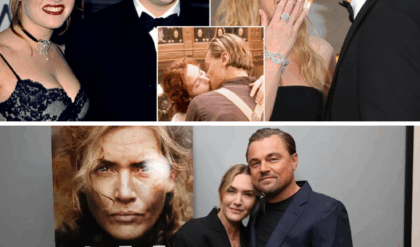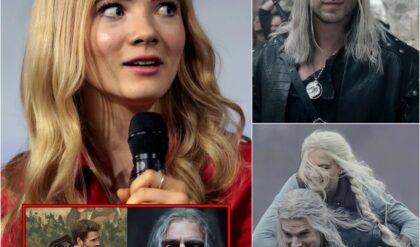The 64th Academy Awards, held on March 30, 1992, at the Dorothy Chandler Pavilion in Los Angeles, California, was a night of cinematic triumph and emotional resonance. Hosted by Billy Crystal for the third time, the ceremony celebrated the best films of 1991, with The Silence of the Lambs sweeping five major awards, including Best Picture, Best Director for Jonathan Demme, Best Actor for Anthony Hopkins, and Best Actress for Jodie Foster. Amid the glamour and excitement, Foster’s appearance stood out not only for her historic win—making her one of the few actresses to secure back-to-back Best Actress Oscars—but also for her adorable and elegant style. Dressed in a tailored Giorgio Armani suit, Foster exuded a blend of sophistication and approachability that fans and critics alike described as “cute” and empowering. Her acceptance speech, delivered with heartfelt sincerity, dedicated the award to “all of the women who came before me who never had the chances I’ve had: the survivors, the pioneers, and the outcasts,” resonated deeply, honoring the trailblazers who paved the way for her success. This article explores the significance of that evening, Foster’s fashion choice, her speech, the context of her win, and the lasting impact on her career and Hollywood’s portrayal of women.
The 1992 Oscars: A Night of Historic Wins and Cultural Shifts
The early 1990s were a transformative period in Hollywood, with films beginning to reflect more diverse narratives and strong female characters. The 64th Academy Awards mirrored this shift, as The Silence of the Lambs became only the third film in history to win the “Big Five” Oscars (Best Picture, Director, Actor, Actress, and Adapted Screenplay), joining It Happened One Night (1934) and One Flew Over the Cuckoo’s Nest (1975). The horror-thriller, based on Thomas Harris’s novel, was a bold choice for the Academy, signaling a departure from traditional prestige dramas.
Billy Crystal’s hosting brought humor and satire to the proceedings, poking fun at the industry’s quirks while keeping the energy high. The night featured memorable moments, such as Jack Palance’s one-armed push-ups during his Best Supporting Actor acceptance for City Slickers, and Satyajit Ray receiving an Honorary Oscar via satellite from India. However, it was the Best Actress category that captured hearts, with nominees including Geena Davis (Thelma & Louise), Laura Dern (Rambling Rose), Bette Midler (For the Boys), Susan Sarandon (Thelma & Louise), and Jodie Foster (The Silence of the Lambs). Foster’s win was anticipated but no less thrilling, as she became the first actress since Katharine Hepburn in 1968 to win consecutive Best Actress awards (following her 1989 win for The Accused).
The ceremony, broadcast live on ABC, drew an audience of over 44 million viewers in the U.S., making it one of the most-watched Oscars of the decade. Fashion played a significant role, with stars showcasing designs from top couturiers. Foster’s choice of an Armani suit was a standout, blending masculinity and femininity in a way that felt fresh and empowering for the era.
Jodie Foster’s Armani Suit: A Cute and Empowering Fashion Statement
In an era when Oscars fashion for women often meant glamorous gowns and elaborate jewelry, Jodie Foster’s decision to wear a Giorgio Armani suit was both bold and endearing. The ensemble consisted of a tailored black jacket with subtle beading, paired with matching trousers and a silk blouse. The suit’s clean lines accentuated Foster’s petite frame, giving her a look that was professional yet approachable—fans on social media retrospectives in 2025 have often described it as “cute” for its boyish charm mixed with elegance. Armani, who had dressed Foster for previous events, personally designed the piece, incorporating subtle nods to her character Clarice Starling’s no-nonsense style in The Silence of the Lambs.
Foster’s red carpet arrival was met with applause, as photographers captured her confident stride and warm smile. In a post-ceremony interview with Entertainment Tonight, she explained her choice: “I wanted something comfortable and true to who I am. Armani makes me feel powerful without the fuss.” The suit, valued at around $5,000 at the time (equivalent to about $11,000 in 2025 dollars), featured Italian wool fabric and hand-stitched details that shimmered under the lights. Critics praised it as a feminist statement, contrasting with the more traditional dresses worn by nominees like Sarandon in red Valentino.
The “cute” factor came from Foster’s playful demeanor. At 33, she exuded a youthful energy, her short haircut and minimal makeup adding to the androgynous appeal. A viral clip from the night shows Foster adjusting her jacket while chatting with Anthony Hopkins, her co-star, with a shy grin that endeared her to viewers. Fashion historians, like those at the Museum of Fashion Institute of Technology, note that Foster’s suit influenced 1990s power dressing, inspiring women to embrace menswear-inspired looks. In retrospectives, Vogue in 2024 called it “adorably iconic,” highlighting how it made Foster look “like a stylish tomboy at the pinnacle of success.”
The Acceptance Speech: A Tribute to Women Pioneers
As presenters Jack Nicholson and Jessica Tandy announced Foster’s name, the audience erupted in applause. Limping slightly from a minor ankle twist earlier that week (unrelated to the film), Foster made her way to the stage, her Armani suit gleaming under the spotlights. Clutching the golden statuette, she delivered a speech that was both personal and profound.
“Thank you. Oh, my God. Thank you so much. This is so incredible,” Foster began, her voice trembling with emotion. She thanked her mother, Evelyn “Brandy” Foster, who was in the audience, for shaping her into the woman she had become. She also acknowledged director Jonathan Demme for the challenging role of Clarice Starling and the team at Orion Pictures for believing in the film. But the speech’s most memorable part came when Foster dedicated the award to the women who paved the way: “This is for all of the women who came before me who never had the chances I’ve had: the survivors, the pioneers, and the outcasts.”
The dedication struck a chord, evoking the struggles of actresses like Bette Davis, Joan Crawford, and her own mother, Janet Leigh, who faced typecasting and ageism. Foster’s words highlighted the barriers broken by these women in an industry dominated by men. The audience, including Meryl Streep and Whoopi Goldberg, gave a standing ovation, with many wiping tears. The New York Times the next day called it “a rallying cry for equality,” noting how Foster’s “cute” appearance belied the speech’s gravity.
Foster’s speech also touched on her personal life. As a private person, she rarely discussed her sexuality publicly at the time (she came out in 2013), but the dedication to “outcasts” was seen by some as a subtle nod to marginalized communities. In a 1992 interview with Rolling Stone, Foster elaborated, “I wanted to honor those who fought for their place in Hollywood, regardless of the odds.”
The Silence of the Lambs: A Groundbreaking Role
Foster’s win was for her portrayal of FBI trainee Clarice Starling in The Silence of the Lambs, a role that demanded emotional depth and physical rigor. Directed by Jonathan Demme and based on Thomas Harris’s novel, the film follows Clarice as she interviews serial killer Hannibal Lecter (Anthony Hopkins) to catch another murderer, Buffalo Bill. Foster’s preparation was intense: she trained with FBI agents, studied psychology, and lost weight to embody the character’s vulnerability.
The film was a critical and commercial success, grossing $272 million worldwide on a $19 million budget. It challenged genre norms as a horror-thriller with psychological depth, earning Foster praise for her nuanced performance. Critics like Roger Ebert called her “mesmerizing,” noting how she brought humanity to a genre often criticized for exploiting women. Foster’s Oscar win made her the youngest two-time Best Actress recipient at 29 (for The Accused) and 33, a record she held until Emma Stone in 2024.
The role’s impact extended beyond awards. Clarice became a feminist icon, inspiring women in law enforcement. In a 2025 retrospective for Variety, Foster reflected, “Clarice was cute in her determination—small but fierce, like I felt in that Armani suit.”
Jodie Foster’s Career Trajectory: From Child Star to Icon
Foster’s path to the 1992 Oscars was paved with early success and deliberate choices. Born on November 19, 1962, in Los Angeles, she began acting at age 3 in commercials and rose to fame as a child star in Taxi Driver (1976), earning her first Oscar nomination at 14 for playing a child prostitute. This role, directed by Martin Scorsese, showcased her precocious talent but also exposed her to the industry’s darker side, including a stalker incident in 1981.
As a teen, Foster balanced acting with education, attending Yale University and earning a degree in literature in 1985. She transitioned to adult roles with The Accused (1988), where her portrayal of a rape survivor won her first Oscar and established her as a serious actress. By 1992, at 29, she had directed her first film, Little Man Tate (1991), signaling her multifaceted career.
Post-1992, Foster continued to excel. She directed Home for the Holidays (1995) and The Beaver (2011), starred in Contact (1997) and Panic Room (2002), and won Golden Globes for Nell (1994). Her 2013 Cecil B. DeMille Award speech at the Golden Globes was a coming-out moment, where she addressed her privacy and thanked her ex-partner Cydney Bernard.
In recent years, Foster has focused on directing, with episodes of Black Mirror and Tales from the Loop, and acting in The Mauritanian (2021), earning a Golden Globe nomination. At 62 in 2025, she’s a mentor to young actresses, advocating for gender equality through the Women in Film organization.
The Armani Suit: Fashion as Empowerment
Giorgio Armani’s design for Foster was groundbreaking. The black suit, with its structured shoulders and slim trousers, challenged the Oscars’ gown tradition. Armani, who dressed Foster for her 1989 win as well, tailored it to her specifications: comfortable yet chic. “Jodie wanted something that made her feel strong,” Armani told WWD in a 2021 retrospective. The suit’s “cute” appeal came from its tailored fit on Foster’s 5’3″ frame, paired with her pixie haircut and minimal jewelry, giving a tomboyish vibe that fans adored.
This choice influenced fashion trends, with power suits becoming popular for women in the 1990s. In a 2024 Vogue article, it was hailed as “adorably defiant,” inspiring modern stars like Kristen Stewart. Foster’s red carpet photos, showing her waving with a radiant smile, capture the joy of the night.
Impact of the Speech: Honoring Survivors and Pioneers
Foster’s dedication to “survivors, pioneers, and outcasts” was a nod to women like Hedy Lamarr, who battled sexism, and her mother, Janet Leigh, a Psycho star who faced typecasting. The speech inspired activism; in 1993, Foster supported the ERA and women’s rights organizations. It resonated with audiences, with The Washington Post calling it “a cute yet powerful tribute.”
The speech’s legacy endures. In 2025, amid #MeToo reflections, it’s cited as an early call for inclusion. Foster’s words encouraged women like Reese Witherspoon to form production companies for better roles.
Cultural Context: Women in Hollywood 1992
1991-1992 was a pivotal year for women in film. Thelma & Louise (1991) sparked feminist debates, while The Silence of the Lambs offered a strong female lead. Foster’s win, alongside McDormand’s for Fargo in 1997, highlighted progress, but challenges remained. Only 25% of directors were women in 1992, per a UCLA study.
Foster’s suit and speech challenged norms, proving women could be “cute” and commanding. Her success paved the way for actresses like Emma Stone and Margot Robbie.
Personal Life and Legacy
Foster’s life off-screen is rich. Married to Alexandra Hedison since 2014, she has two sons from a previous relationship. Her privacy stance, articulated in her 2013 speech, has been respected. At 62 in 2025, she’s directing Nyad for Netflix, a biopic on swimmer Diana Nyad.
Her 1992 Oscar night remains a highlight, symbolizing triumph over adversity. The Armani suit, now in the Academy Museum, represents her enduring style.
Conclusion
Jodie Foster’s 1992 Oscars appearance in her Armani suit was a moment of adorable elegance and profound dedication. Her speech, honoring women’s struggles, remains inspirational. From child star to icon, Foster’s career reflects resilience and grace, leaving a legacy that continues to inspire.





